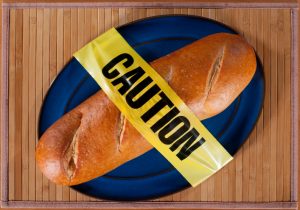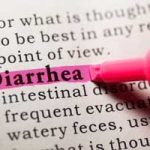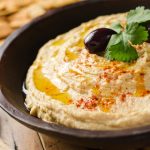 You may have noticed a trend in your local grocery store: More and more labels read “gluten-free.” You may think it’s the latest in health food, but for people with celiac disease this is how they have to eat.
You may have noticed a trend in your local grocery store: More and more labels read “gluten-free.” You may think it’s the latest in health food, but for people with celiac disease this is how they have to eat.
Gluten is a protein found in wheat endosperm that makes dough chewy and stretchy. If you have a healthy digestive system you don’t really need to be concerned about gluten. But for people with a gluten intolerance, or celiac disease, their bodies cannot break the protein down. This causes stomach distress.
Advertisement
If you’ve been purchasing gluten-free products thinking it’s a new diet craze, you are mistaken. There is no proof to support that removing gluten from your diet will promote weight loss.
To understand gluten and its effects on the body let’s examine celiac disease.
What is celiac disease?
 Celiac disease is an autoimmune disorder and partly hereditary disease.As you may already know, people with celiac disease should not consume gluten. The protein causes problems with their digestive system and as result, the absorption of nutrients is greatly reduced. When people with celiac disease eat gluten, the immune response is to attack the intestines, leading to damage and inflammation.
Celiac disease is an autoimmune disorder and partly hereditary disease.As you may already know, people with celiac disease should not consume gluten. The protein causes problems with their digestive system and as result, the absorption of nutrients is greatly reduced. When people with celiac disease eat gluten, the immune response is to attack the intestines, leading to damage and inflammation.
Damage to the intestine might cause weight loss, stomach issues such as bloating and cramping, as well as malnourishment. And malnourishment can lead to problems for the whole body.
Causes of celiac disease
 The Mayo Clinic estimates one in every 141 Americans has celiac disease. The clinic notes it often goes undiagnosed. While the exact cause remains unclear, gene mutations have been linked to the onset of celiac disease as well as stress, surgery or even pregnancy.
The Mayo Clinic estimates one in every 141 Americans has celiac disease. The clinic notes it often goes undiagnosed. While the exact cause remains unclear, gene mutations have been linked to the onset of celiac disease as well as stress, surgery or even pregnancy.
Research from the University of Oslo have been tracking the immune response in those with celiac disease. They found that the T-lymphocytes, or T-cells, of celiac disease sufferers attack gluten thinking the protein is a virus or bacteria.
This new finding may better help us understand celiac disease and develop treatment.
Symptoms and risk factors of celiac disease
 Celiac disease has been observed to be more common among those with the following risk factors:
Celiac disease has been observed to be more common among those with the following risk factors:
- Diabetes
- Family history of celiac disease
- Autoimmune thyroid disorder
- Microscopic colitis
- Down syndrome.
Symptoms associated with celiac disease include:
- Constipation
- Anemia
- Loss of bone density
- Skin rashes
- Damage to dental enamel
- Headaches
- Fatigue
- Diarrhea
- Acid reflux
- Joint pain
- Cramping of the abdomen
- Bloating and gas.
Living with celiac disease
 Now that the world is becoming more aware of celiac disease it is much easier to live with it. As mentioned, gluten-free labels in grocery stores and restaurants are popping up more frequently. As the community becomes increasingly conscious of this disease, more options are being made available.
Now that the world is becoming more aware of celiac disease it is much easier to live with it. As mentioned, gluten-free labels in grocery stores and restaurants are popping up more frequently. As the community becomes increasingly conscious of this disease, more options are being made available.
Gluten-Free Food List
Advertisement
If you’re unsure as to what you can eat if you have celiac disease, here are some daily diet staples available to you:
- Healthy fats
- Protein
- Fruits and vegetables.
| Diet Staples | Sources |
|---|---|
| Healthy Fats | extra virgin olive oil, sesame oil, coconut oil, butter, almond milk, avocados, coconuts, olives,nuts and seeds (flaxseed, sunflower seeds, pumpkin seeds, sesame seeds, chia seeds). |
| Protein | whole eggs, wild fish (salmon, black cod, mahi mahi, grouper,herring, trout, sardines) shellfish and molluscs (shrimp, crab, lobster, mussels, clams, oysters) fowl, poultry, and pork (beef, lamb, liver, bison, chicken, turkey, duck, ostrich, veal) |
| Fruits | avocado, bell peppers, cucumber, tomato, zucchini, squash, pumpkin, eggplant, lemons, limes |
| Vegetables | leafy greens and lettuces, collards, spinach, broccoli, kale, chard, cabbage, onions, mushrooms, cauliflower, Brussels sprouts, sauerkraut, artichoke, alfalfa sprouts, green beans, celery, bok choy, radishes, watercress, turnip, |
There are other options that you can enjoy in moderation such as:
- Non-gluten grains: rice, buckwheat, amaranth and oats (ensure they are not processed in mills which produce wheat products)
- Legumes: beans, chickpeas and peas
- Dairy products from cow’s milk – use sparingly and in moderation
- Wine: one glass a day is okay
- Carrots and parsnips.
If you are newly diagnosed, speaking with others who have celiac disease might help you receive greater peace of mind. As you learn what your options are, you will be able to successfully manage celiac disease.
